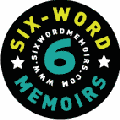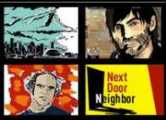Who Is … The Google Doodle Guy?
March 13th, 2006 by Tim BarkowBernice Yeung is an editor at Hyphen magazine
When he was a kid growing up in South Korea, Dennis Hwang doodled in class instead of listening to his teachers. They’d holler at him to stop. He’d ignore them, and his spiral notebooks would overflow with cartoon frogs and planes and rainbows.
Some 20 years later, Hwang’s artistic defiance has paid off — he’s arguably the most viewed artist on the planet. In 2000, the young and steadfast doodler landed a job as the “Google doodle” guy, the enigmatic graphic designer who changes up the company logo every time there’s a holiday.
Working from a messy cubicle with three 24-inch computer monitors at Google’s Mountain View, Calif., headquarters, Hwang has converted the logo into Braille for Louis Braille’s birthday, substituted an “o” with a soccer ball for the 2002 World Cup, and celebrated the 50th anniversary of the understanding of DNA by transforming the “o’s” into a rainbow-colored double helix. By now, he’s drawn about 300 Google logos, including a slew of international holidays from Korean Independence Day to Ramadan.
Hwang’s odd career trajectory started in the late ’90s at Stanford University, where he was double-majoring in fine art and computer science. “I was dead set on studying fine art,” he says, “but Stanford has a strong computer science department so I got sucked into that since I wanted to know about tools for creating animations and movies.” A guy in Hwang’s dorm told him about internships at a local dotcom with a funny name that means the number 1 followed by 100 zeros: Google.
By the time Hwang landed an unpaid programming gig, Google was already mixing up its logo, a tradition that had started the summer before when founders Sergey Brin and Larry Page inserted a flaming stick figure behind the company logo before packing up a car and heading out to desert arts festival Burning Man. They later asked a few guest artists to design variations of the logo, but when Dennis came aboard rumors of his talents quickly circulated among the staff.
First assignment: fix up the brand for the Fourth of July. Dennis drew fireworks coming out of the center “o” and placed three Founding Fathers to the right of the logo. “They were using clip art at the time so I thought, Fair enough, it’s within my league,” says Hwang.
He impressed his bosses so much that they not only gave him a programming job with salary and benefits, but custody of the Google doodles. “At first I didn’t quite have a clear understanding of the scope of these images. Even now, it really hasn’t hit me how many people see them.”
Five years later, Hwang is still pumping out new marks every week or two, generating ideas from Google doodle meetings (four a year), and from Google users suggestions (via email, of course). Though the doodles only make up 20 percent of his job — his official title is Webmaster and involves prodigious amounts of coding as well as managing a team of programmers, — the 27-year-old Hwang has learned that people take his doodles very personally.
Last June, for example, he created a logo for Bloomsday, the celebration of the work of James Joyce that’s based on events from his novel Ulysses (Hwang placed the author’s bespectacled face in the “G” and a tiny book to the right of the logo). That day he received dozens of emails from literary scholars telling him how much they appreciated his doodle. But one irate scholar wrote in to complain that Dennis had gotten it all wrong: the original version of Ulysses had a blue cover and the logo had erroneously featured a book with a yellow color. (He was not moved to change his Joycian vision.)
And then there are the librarians. On National Library Week in 2005, Hwang placed an open book where the two “o’s” should have been, and librarians from all over the country went nuts, sending him hundreds of flattering notes. A professional librarian organization has since sent him fan mail in the form of cards and a Librarian action figure with “amazing push-button shushing action.”
Although Hwang says he never expected his doodling to draw so much attention, he enjoys the reality of millions of eyeballs seeing his artwork. “I usually don’t tell people unless they ask me what I do,” he says. “And people don’t exactly recognize me on the street.”
He will admit it’s a real conversation starter at parties. “But,” he says, “I don’t use it to get dates.”




